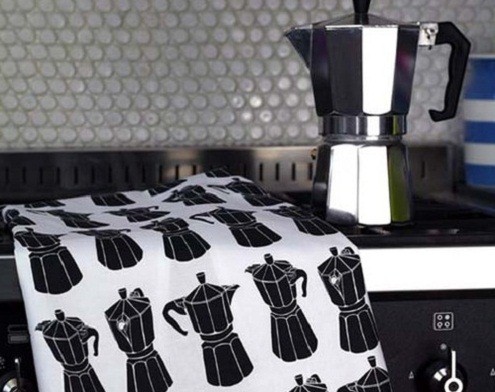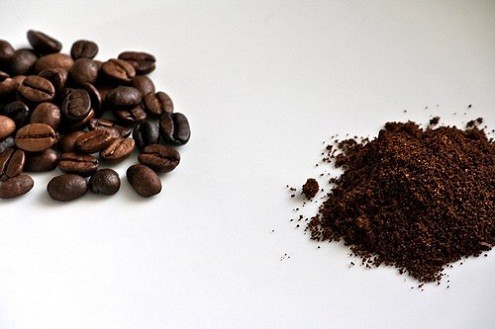Diana Mieczan with the first in a series of posts on coffee culture across the globe.
By Diana Mieczan
Let’s go for a coffee – this must be one of the most common phrases we use in everyday urban life.

Coffee – so much more than a hot beverage. No matter where you go in the world, it’s always present in some shape or form – coffee is truly a cultural and social phenomenon.
With this series I am inviting you to a tour around the world, visiting all those places that are famous for their coffee. I feel it’s only fitting to start our journey in Italy.

But first, let’s go back to the beginning! As the story goes, the magical effects of coffee was first discovered by an Ethiopian goatherd, who noticed that his goats always got particularly perky after eating a certain fruit. Perplexed by this occurrence, the curious goatherd also took a handful of those cherry-like berries – so he became the first human to experience that kick of caffeine we all know and love.
Un caffe – a strong, aromatic power-shot created by forcing pressurised water through tightly packed coffee powder. This no-nonsense Italian espresso is genius in its simplicity and purity.


The history of these Italian espresso machines goes back to the late 19th century. Over the decades that followed, it went through several different stages of advancement and improvement. From the late 1940’s these industrial-like machines symbolized modernity and a cosmopolitan, out-going lifestyle of the post-war era.

However, there is also a quintessentially Italian coffee maker for the home user: the Moka Pot. Real coffee aficionados often claim that this method cannot compete with the strength and aroma of an espresso made with a professional coffee machine – and maybe they are right, but for me, this is definitely the closest you can get to a “true” coffee experience at home.
Whenever I worked with Italians, the first thing they asked after they landed on foreign soil: “Where do you buy a macchinetta here?”

A Moka Pot has a bottom chamber, a filter basket and a top collecting chamber. The procedure is quite simple: you put water in the bottom chamber, fill the basket with ground coffee, screw the bottom and the top together, place it on the stove and wait for the magic to happen. Just a few minutes later you can close your eyes and breathe in that refreshing scent of brewing coffee and imagine you’re sitting by the bar of a cafeteria in Rome: “Un caffé per favore!” And just like that: the bubbling black coffee emerges in the top chamber of our moka pot, accompanied by that unique gurgling sound.
It sounded simple, of course, but my Italian friends quickly overwhelmed me with a whole bunch of minor details, seemingly unnecessarily meticulous to a layman like me, but all-important to the true coffee connoisseur I pretend to be.


First of all, you have to buy real Italian coffee, especially intended for moka makers (they usually have those symbols in the back) – whole beans if possible that you will grind fresh just before brewing. (For this type of coffee, use the „fine” setting on your grinder.) The other important element is water quality. Mainly, I would avoid tap water. I recommend using bottled mineral water, or as they say „soft” water. When filling the filter basket with coffee, make sure it’s full but not overly packed. It’s also important to turn the gas way down to minimum when heating the pot, so the coffee doesn’t get that burnt aftertaste. Another cool tip is to leave the lid open while cooking to avoid the excess water dripping back into our brew.
As soon as the gurgling sound stops, you know your coffee is ready! Enjoy!

Finally, just one more advice: once you sipped your tasty cuppa and feel like a real Italian signora, don’t be disillusioned that upon leaving your casa, you won’t find yourself in the middle of Piazza San Marco.
(Photos via L’Aragosta, Cognac and Coffee, Eric Wolfinger, Zazzle, Luzelle van der Westhuizen (mengsel), Eka, Espressli Italian, Kari Geltemeyer)












Hi, writing from Italy. Lovely to see your moka pot piece, just one little detail.
Moka grind is actually quite coarse, not fine. In fact if you open a brick of moka grind coffee, and then do the same with a brick of espresso grind coffee, you can feel this coarseness yourself between your fingers. Espresso is fine, almost dusty, whereas moka is usually a much more gritty texture.
Buona giornata a tutti.
I love reading your post about coffee, the history, the flavors, and ideas! I’ll have to share this with my coffee loving husband!
Aww..thank you, Di! You are so sweet.
Interesting article. My daughter’s moka tea towel looks great.
Lovely photos, and great story. Thanks a lot. :)
Glad you enjoyed it!
LOVED this article. Great tips!! Diana is fabulous!
Aww, Caroline. Thank you.